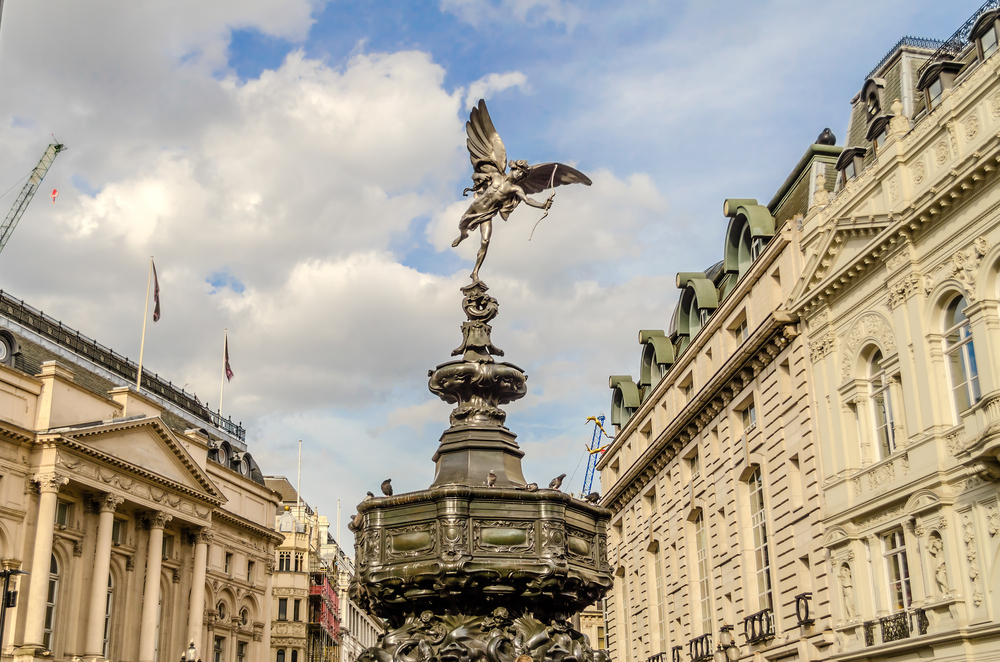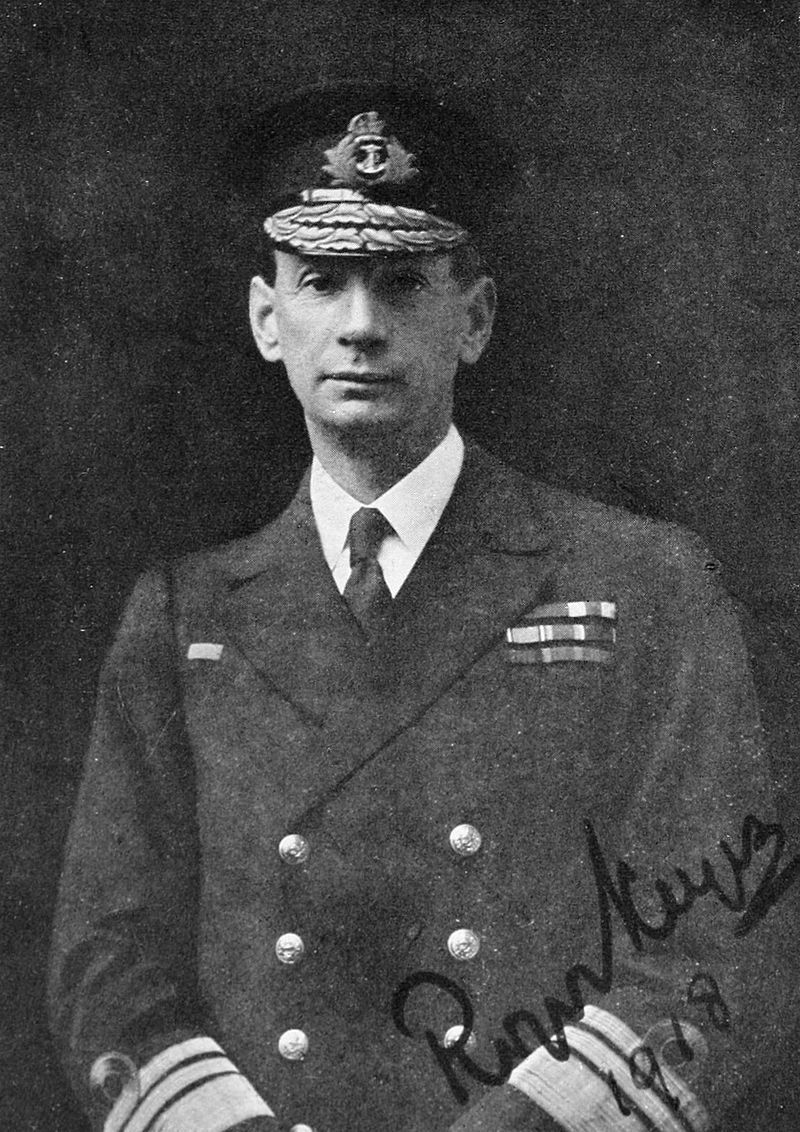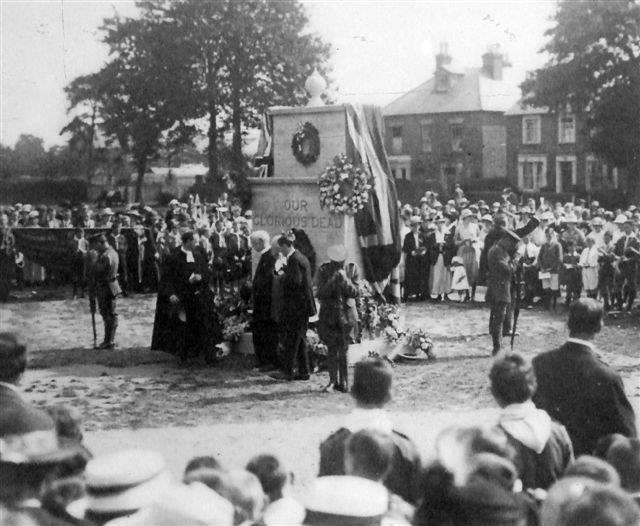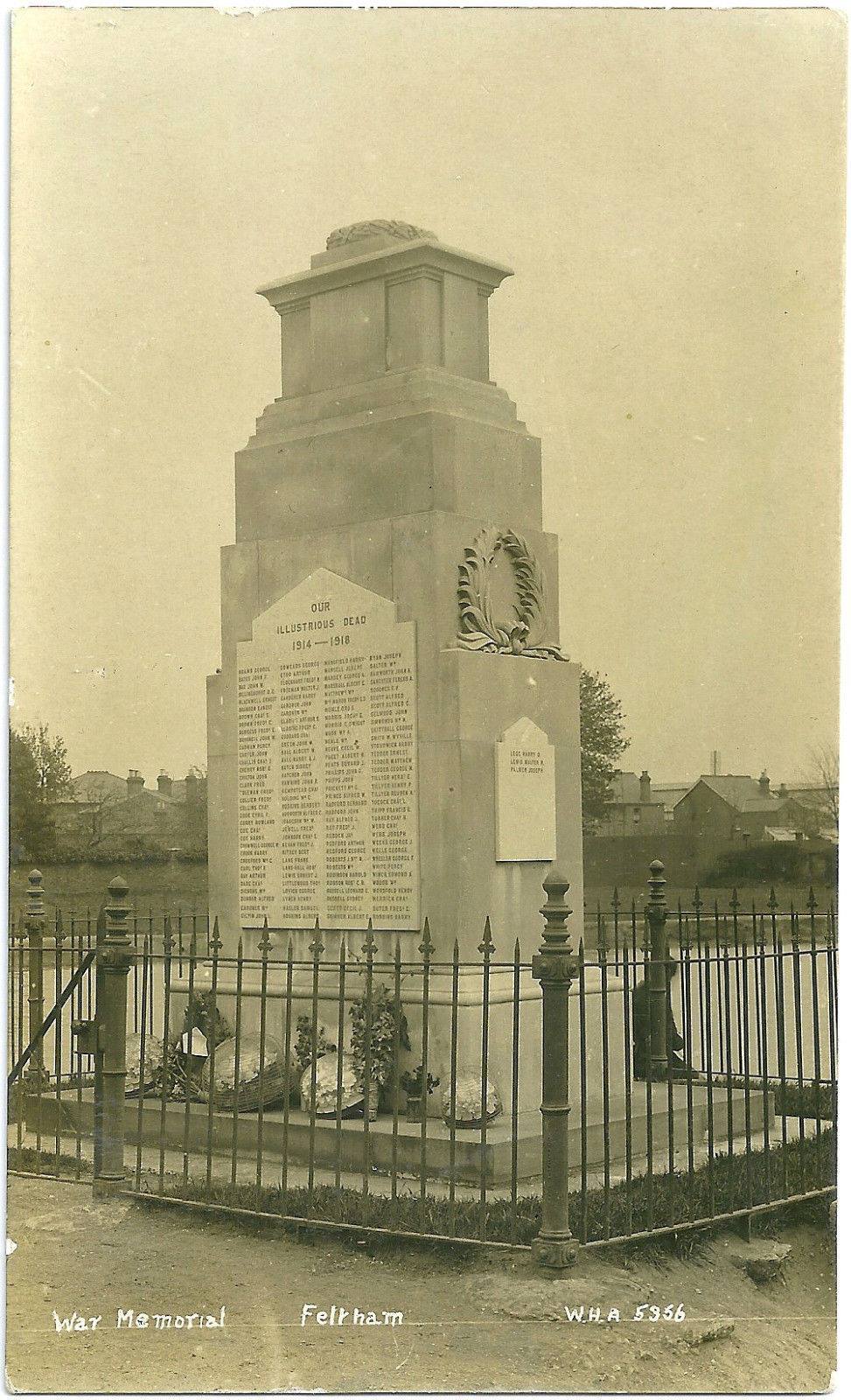FELTHAM CENOTAPH
by Angela Parton (with thanks to Feltham History Group, Feltham Local studies Department and FHB Appreciation Society Facebook page for info and photos)
Records indicate that in January 1919, the General Purposes Committee had under consideration a proposed war memorial for Feltham. A Feltham War Memorial Committee was appointed, comprising the vicar of St Dunstan's Church, numerous councillors and local businessmen including Messrs. H. Langford, Carter, E.T Pascoe, J.A Parker, A.W Musk, (who lost his only son), W.Lee-Uff, Arnold Moore, A. Colarossi (whose father was the model for the statue of Eros in Piccadilly Circus), Horace, Garland, the reverend and Mrs Browell, and Mrs. Tom Parker.

Eros statue Piccadilly Circus, London
There were many discussions about what form the memorial should take. Ideas included creating a club for discharged soldiers and sailors, as suggested by John Wilmot, minister for the independent church. A notice was placed in the paper of a public meeting about the war memorial, which was held on Wednesday 29th January 1919 at 8pm at the Council School in Hanworth Road, Feltham. Suggestions made during the meeting included installing a clock in the tower of St Catherine's Church, a free public library, a monument in a public area, and a public bathing facility.
In June 1919, following the public meeting, the War Memorial Committee unanimously agreed that a clock should be installed in St Catherine's Church steeple, with a tablet commemorating the fallen to be placed outside. This was not done, however, because the steeple's structure wasn't suitable.
By September 1919 , great interest was shown by the public and ex-servicemen in having a memorial hall built, using the £3,250 collected as a result of the peace celebrations. In the meantime, the temporary nature of the wooden cenotaph on the Green resulted in one committee member, L. Lloyd Jones, resigning his position in protest.
Eventually, the idea of a more permanent cenotaph on he Green, similar to the one in Whitehall, was considered and in February 1920, it was determined that a permanent stone cenotaph should be placed between the pond and the High Street. This plan meant removing part of the pond and according to Mr. Coleman, Mr. Colarossi suggested that the entire pond be filled to create a recreation ground, with the cenotaph located on the island. Fortunately, Mr. Colarossi did not get his way, with only a partial filling of the pond done in order to accommodate the permanent Portland stone war memorial that we know and love today.
On 2nd October 1920, Rear Admiral Sir Roger Keyes RN, GCB, KCV O, CMG, DSO, unveiled Feltham's war memorial.
There has always been a question about why such a highly decorated Admiral came to little old Feltham to unveil its memorial. As the result of a great deal of research I believe I have come up with one reason, which brought a little tear to my eye and even greater pride towards my town. The reason is possibly connected to the contents of a letter written by the Secretary of the War Memorial Committee, Mr. W. Lee-Uff, inviting Admiral Keyes to unveil the memorial. His invitation was accepted and whilst further research is needed, there may be a clue in the speech Sir Roger Keyes gave before the memorial was unveiled.
This is an extract from the Middlesex Chronicle's account of the unveiling and the words spoken by Keyes:

For observance of the first anniversary of the Armistice in 1919, the Feltham Urban District Council erected a temporary timber monument on Feltham Green.

Timber War Memorial, Feltham Green 1919
The photo above shows Rev. Browell and the leader of Feltham Council, John Waldegrave Daines, leading the service. This took place in mid-summer as the attire and trees in full leaf attest. The war memorial we have today was funded by public subscription and cost £370. It is made of Portland stone on a concrete base and carries 123 names of local dead from WW1. Further names were added in recent times.
One of the 14 plane trees was removed so that the cenotaph could be made more visible along the High Street. When this was done no one knows. If you count the plane trees today you will see there are only 12; the other one blew down in a storm.

Portland Stone War Memorial, High Street, in front of Feltham Green, 1924
